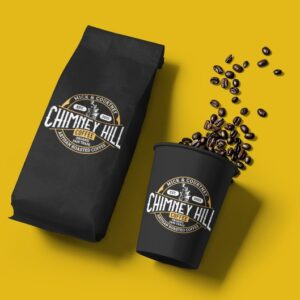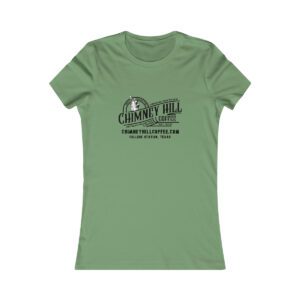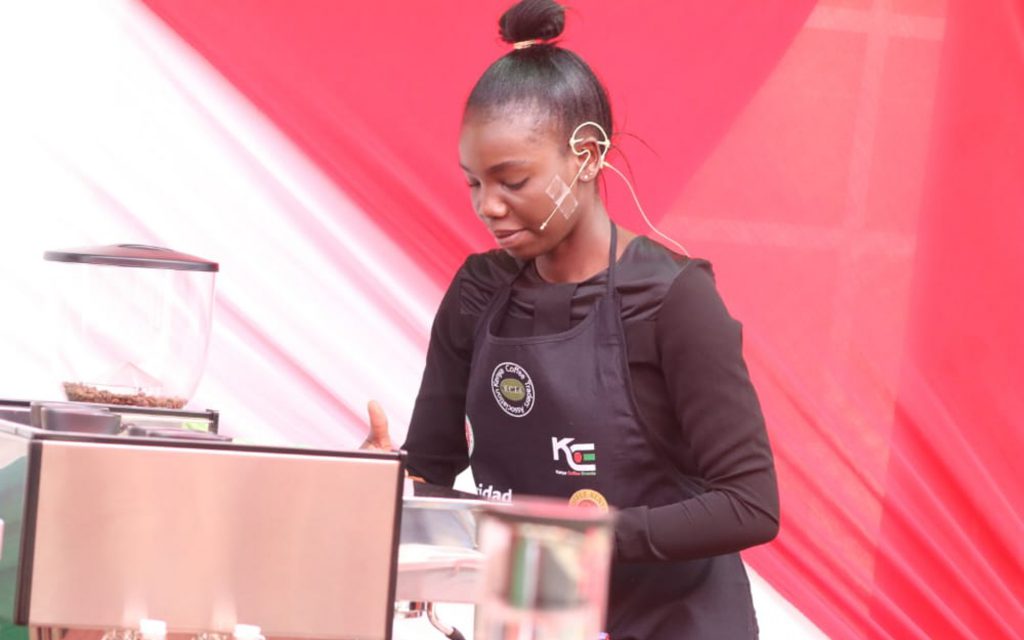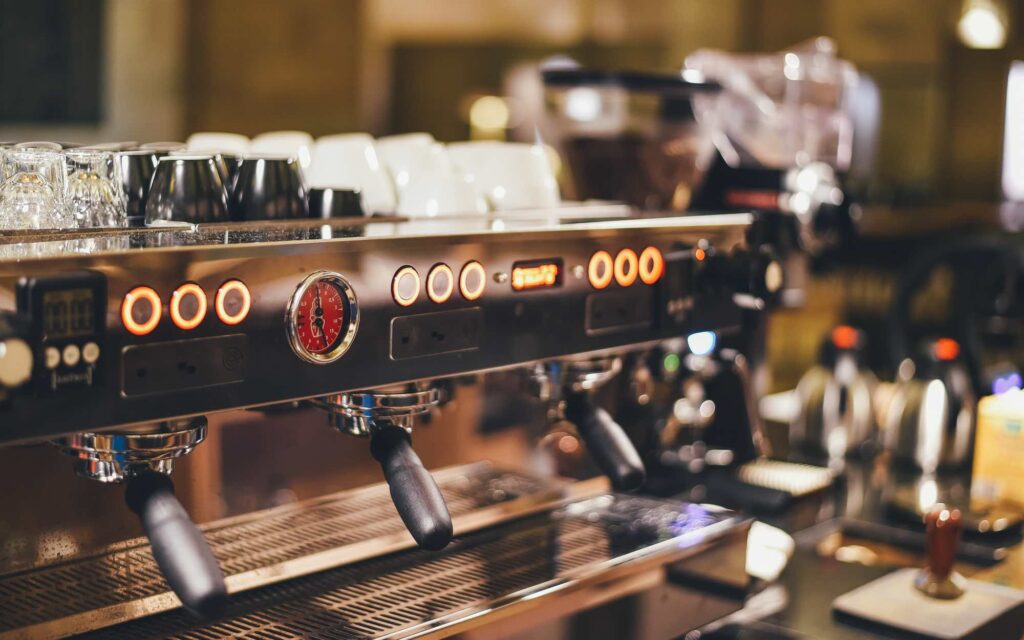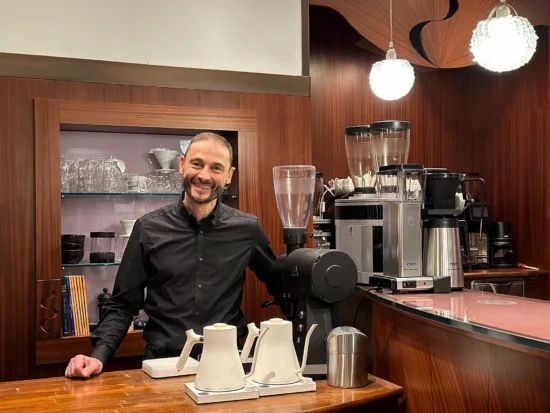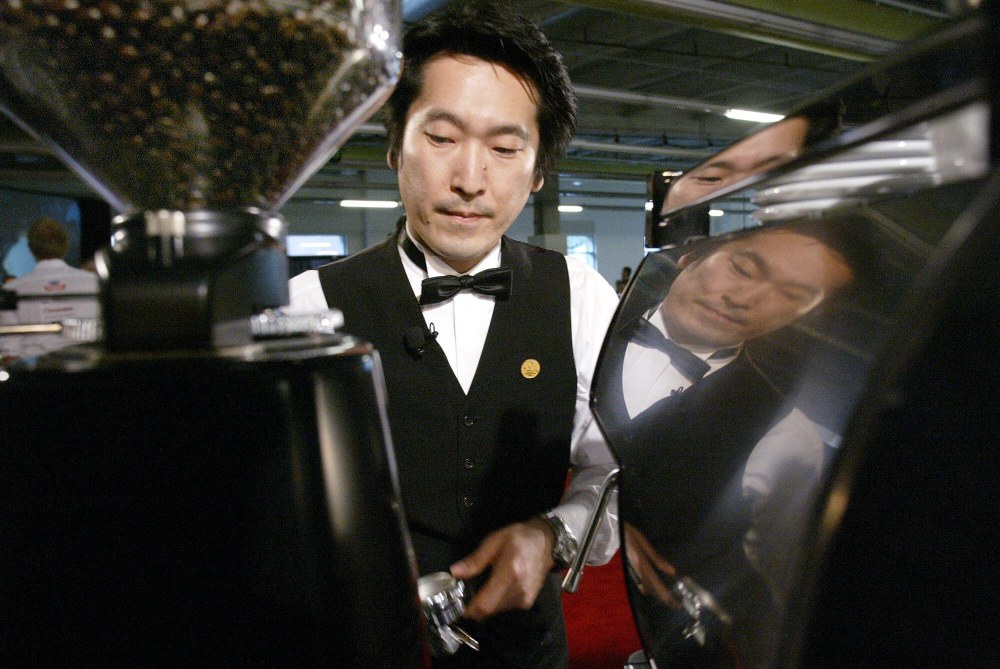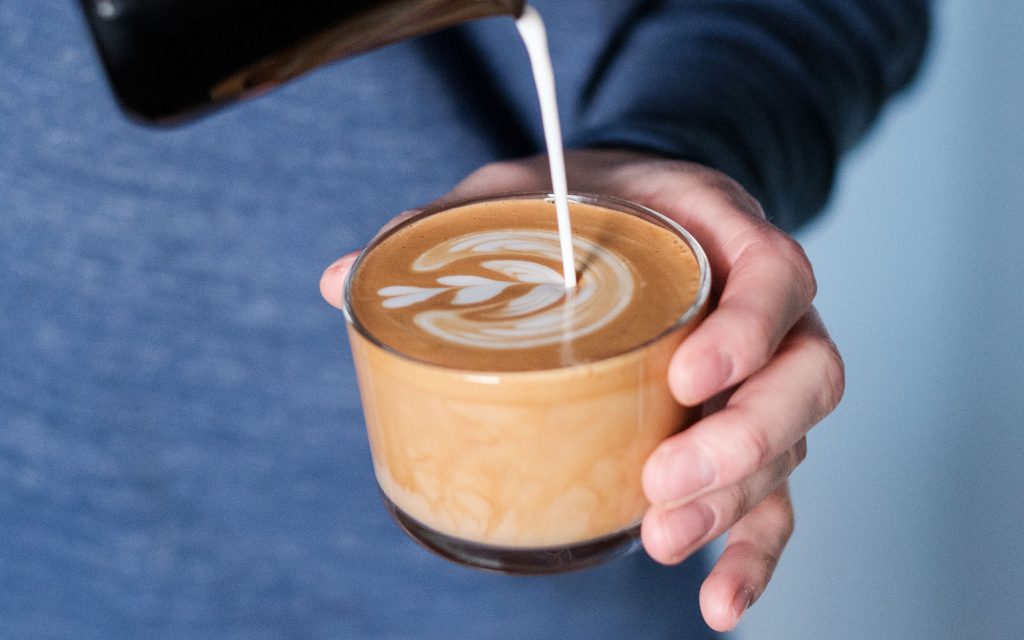The Malaysian capital is often visited in a hurry, but visitors who take the time to explore will discover a welcoming city, thanks in part to its friendly specialty cafés. BY TANYA NANETTI SENIOR ONLINE CORRESPONDENT Photos by Tanya Nanetti Kuala Lumpur, the capital...
Fresh Fruit or “Juicy Fruit”? Tasting 90 Anaerobic-Processed Coffees
Fresh Fruit or “Juicy Fruit”? Tasting 90 Anaerobic-Processed Coffees
Fresh Fruit or “Juicy Fruit”? Tasting 90 Anaerobic-Processed Coffees
Fresh Fruit or “Juicy Fruit”? Tasting 90 Anaerobic-Processed Coffees
Fresh Fruit or “Juicy Fruit”? Tasting 90 Anaerobic-Processed Coffees
Fresh Fruit or “Juicy Fruit”? Tasting 90 Anaerobic-Processed Coffees
Thread Coffee Roasters Opens Tailor-Made Roastery in Baltimore
The interwoven actions of Thread Coffee Roasters in Baltimore are finding exponentially more space this week with the grand opening of a brand-new production roastery and training lab. The worker-owned...
Toronto’s Pilot Coffee Roasters Acquiring Bridgehead Coffee for $3.6 Million
Toronto, Ontario-based specialty coffee roaster and retailer Pilot Coffee Roasters is acquiring Ottawa-based Bridgehead Coffee in a deal worth approximately US$3.6 million. Bridgehead, which has 21 coffee shop locations throughout...
Baking With Coffee For Beginners
This article is from the coffee website Sprudge at http://sprudge.com. This is the RSS feed version. Where to get started when introducing coffee to your bakes.
Bypass coffee brewing: How can it improve extraction?
There is a lot of science to brewing coffee. Whether knowingly or unknowingly, we trigger – and try to control – an almost endless number of chemical reactions to achieve the perfect extraction. To do so, we have to tweak different variables – such as grind size,...
Hawaiian Legislators Introduce Bills for Stricter Coffee Labeling
Legislators representing the Kona district of Hawaii have introduced a series of bills that would require more strict labeling requirements for single-origin coffees and blends containing Hawaiian-grown coffees. Some Kona...
New AFCA Director Gilbert Gatali on the 20th African Fine Coffees Conference
As the African Fine Coffees Association (AFCA) prepares for the 20th iteration of its flagship event, the African Fine Coffees Conference and Exhibition, the group is operating under new executive...
Philadelphia’s Café Don Pedro Seeks to Build Up Small Businesses
A Dominican-owned coffee roasting company called Café Don Pedro recently launched in Philadelphia with ambitions for direct trading and boosting more Latino-owned small businesses throughout its supply and distribution networks....
How much do you over-extract coffee in recipes?
This is sort of an odd question, but it's not a troll. While I love brewing specialty coffee, I also enjoy frappes (with or without ice cream). A major hurdle when using my espresso has been that while the final beverage tastes fine, the coffee is just too high...
Sprudge Maps Spotlight: Little Bear Coffee In Albuquerque, NM
This article is from the coffee website Sprudge at http://sprudge.com. This is the RSS feed version. Little Bear Coffee in Albuquerque, New Mexico.
Starbucks Will Hold their Own Barista Championship Thank You Very Much
This article is from the coffee website Sprudge at http://sprudge.com. This is the RSS feed version. The North American Barista Championship is expected to host over 15,000 Starbucks hourly workers.
What I Learned from My First Tea Ceremony
After taking in a brief moment of a tea ceremony in Thailand, I finally had the chance to participate in the full experience recently in Malaysia. BY TANYA NANETTI SENIOR ONLINE CORRESPONDENT Photos by Tanya Nanetti In the years that I worked as a barista in a café,...
Why it’s easier for wealthier producers to grow specialty coffee
It takes money – and sometimes a lot – to grow specialty coffee. Producers not only need to continuously maintain and improve quality and yields, but they also have to invest back into their farms. Whether it’s replacing equipment and machinery or planting more...
Does specialty Robusta exist?
Hello! Has anyone tried 'specialty robusta'? I work with specialty cacao, and I often observe Robusta shrubs being cultivated at lower altitudes alongside cacao trees. Some farmers are experimenting with carbonic maceration to enhance the marketability of...
[MOD] The Daily Question Thread
Welcome to the daily /r/Coffee question thread! There are no stupid questions here, ask a question and get an answer! We all have to start somewhere and sometimes it is hard to figure out just what you are doing right or doing wrong. Luckily, the /r/Coffee community...
The Sprudge Guide To Coffee Shops In Vancouver, BC
This article is from the coffee website Sprudge at http://sprudge.com. This is the RSS feed version. Where to drink coffee in Vancouver, British Columbia, Canada.
Coffee Machine (High density use)
Hi everyone, i am new in this coffee world and i am looking to buy me a coffee machine to setup a small business. I am looking for affordable machine that is good for high density use. Im open for any recommendation and opinion. Thank you guys! Here is what ive found...
Which to buy first?
Hi there, mostly a lurker until now. I'm trying to incentivize myself towards some goals and decided that rewarding myself with a better coffee set up upon reaching those goals would be great. I plan to get myself one nice thing when I reach my intermediate goal...
[MOD] The Official Deal Thread
Welcome to the /r/Coffee deal and promotional thread! In this weekly thread, industry folk can post upcoming deals or other promotions their companies are holding, or promote new products to /r/Coffee subscribers! Regular users can also post deals they come across....
The London Coffee Festival has just more than doubled its ticket price
Last year: £18 This year: £38 Unbelievable. It’s the same venue and same setup. I’m just an ordinary coffee fan and every year I spend a lot buying roasts and equipment there. submitted by /u/gahgeer-is-back [link] [comments]
Explain making good coffee to me like I’m 5.
Hi everyone, I’m not new to drinking coffee, but I’d like to start making it (well) at home myself. I’m totally clueless. I have an old Keurig that I rarely use, as well as a basic Mr. Coffee maker. Usually I buy dark roast ground coffee (I do like a good, strong cup...
Seeking instant test for rough caffeine level in coffee
About once a month, some inattentive barista gives me regular coffee by mistake, which is a bummer. I drink decaf. So when I get coffee at a cafe, I'd like to do an instant test of the rough caffeine level by dipping a strip into the coffee. Something analogous...
Questions/thoughts on cardamom-forward "thermal shock" processed coffees.
Hey everyone, Having a cup of Buttercream from September roasters and got to thinking. This is the second thermal-shock processed coffee I have had with this huge, distinctive cardamom note (The other being DAK milky cake which is also from Colombia, but from a...
Third Wave Coffee brands
Greetings to all, I am reaching out to this knowledgeable community with a query regarding the recognition of coffee brands within the third wave coffee movement. Is there an existing, publicly accessible list that categorizes and acknowledges coffee brands as part of...
Fresh Fruit or “Juicy Fruit”? Tasting 90 Anaerobic-Processed Coffees
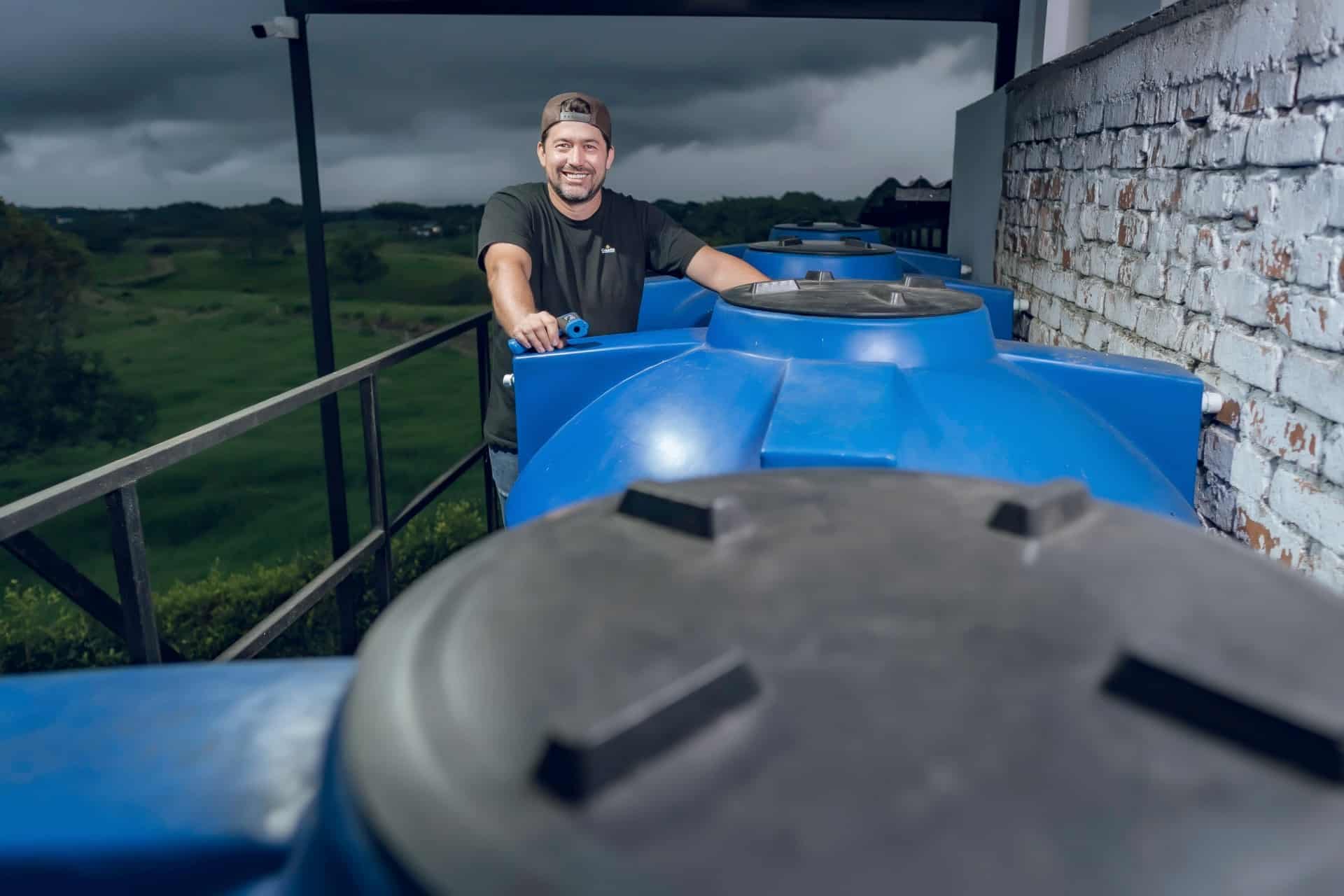

Edwin Noreña checks on his Double Carbonic Galaxy Hops Geisha at Finca Campo Hermoso in Colombia. Courtesy of Barrington Coffee Roasting Co.
Of all of the innovations challenging traditional expectations in specialty coffee today, the use of anaerobic (limited oxygen) fermentation to alter and intensify the character of the cup is perhaps the most striking. Anaerobic-fermented coffees that explicitly and successfully express this method tend to be intense and almost shockingly floral and fruit-toned, with the flowers often boosted by a candyish sweetness and surprising spice and herb notes.
Many in the specialty coffee world love them for their sheer difference from ordinary coffees, for the audacity of their soaring flowers and seduction of their sweetness. A few find their profiles too over-the-top, their floral notes perhaps less like fresh bouquets and more like eau-de-cologne, their fruit more Juicy Fruit gum than fresh fruit. Many in the coffee world look at anaerobic-fermented coffees as the latest step forward in freeing specialty coffee from the predictability of its commodity past and thrusting it into a future of exciting new coffee experiences unlike any that have come before. Others look at these new, processing-driven coffee styles as another step in the erosion of the reliable practices that have created and maintain the great coffee types they love, the classic Kenyas and washed Ethiopias, subtle washed Perus and earthy wet-hulled Sumatras.
The best way for readers to take a position on all of that is to try a couple of the coffees we review this month. We cupped through 90 coffees described by their roasters as having been subject to anaerobic fermentation (for a little more on what that means technically, see the section Complex Events at the Mill farther along in this report). These 90 anaerobic samples averaged a score of 89, with a high of 95 and a low of 79. In choosing 10 coffees to review, we focused on samples that most clearly and pleasingly expressed the full-on floral, fruit and spice genius of the style.
Sketching the Anaerobic Style
What is that style? Most universally, all genuinely anaerobically processed coffees share the same pervasive aromatic tendency. If you’ve opened one bag you’ll know it. If you open two bags, you’ll probably never forget it. This aromatic complex is apparently created during the limited-oxygen fermentation undergone by all anaerobic coffees. It is a scent related to the aromas of certain other mainly bacterially fermented foods and beverages, like yogurt, kefir, sauerkraut, kimchi and kombucha. In terms of basic tastes, it is a version of sour-sweetness. At Coffee Review, we have settled on tangy-sweet rather than sour-sweet as an appropriate generic descriptor for this sensation as it displays in coffee.
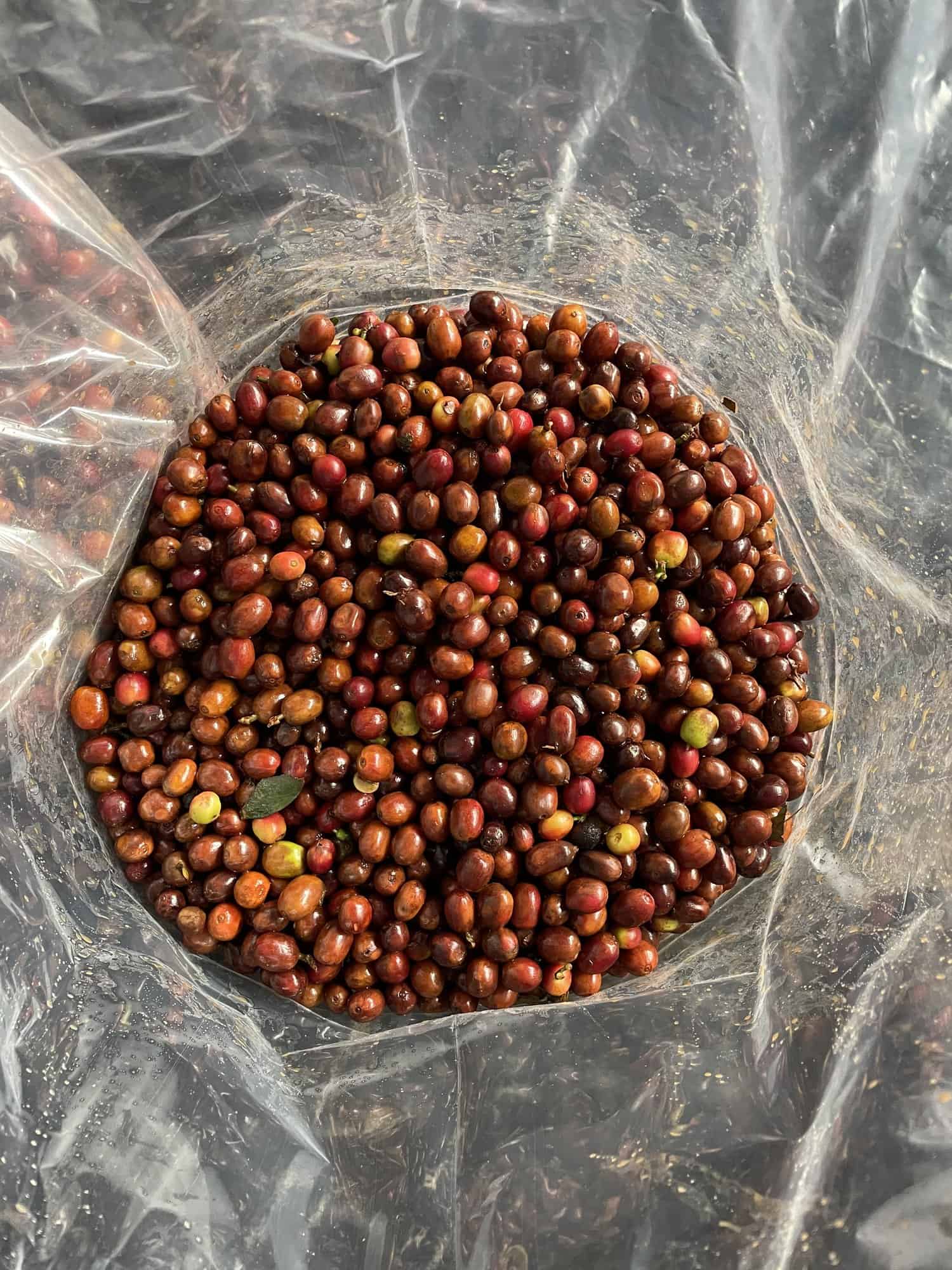

Anaerobically fermented whole coffee cherries at Colombia’s Finca El Placer. Courtesy of Chromatic Coffee.
One striking feature of this aromatic tendency is that you experience it immediately, as soon as you open a bag of anaerobically fermented coffee. Yet, once you brew that coffee, it is much less dominating. In the cup, tendencies we noted earlier come into play. If it is a successful anaerobic, free of faults such as vinegar-like over-fermentation or mulchy vegetable notes, you will likely experience intense sweetness. This sweetness will usually be complicated by a tangy, lactic version of acidity and sometimes balanced by a savory depth related to spice and nut. What you will most likely also experience is a sometimes coherent, sometimes jumbled assortment of intense and often idiosyncratic flavor notes. For example, it is not at all unusual to have candyish notes like bubblegum waft up next to baking spice suggestions like cardamom. Floral notes are sometimes so screamingly intense that they seem to express the very abstract nature of flowers.
Coffee Review and Anaerobics
We had many discussions at Coffee Review about how we should approach reporting on this increasingly popular coffee style. We wanted to respect its originality, yet avoid celebrating it purely because of that originality. We wanted to find an appropriate structure for evaluating the success of specific examples of the anaerobic style, as we did some years ago for natural-processed coffees when they first surged in popularity.
Ultimately, I took responsibility for the final ratings, working with descriptions and draft ratings from my two Q-grader colleagues, Jason Sarley and Kim Westerman. My approach was to value versions of the style that are balanced and relatively coherent, versions in which the floral and fruit notes are contexted into something generally recognizable as coffee, and in which sweetness comes across as natural rather than candyish or cloying. In other words, coffees that are exciting and different, but still taste like coffee and not like a conglomerate of cologne and sugar.
The Roaster Context: Pursuit of Balance
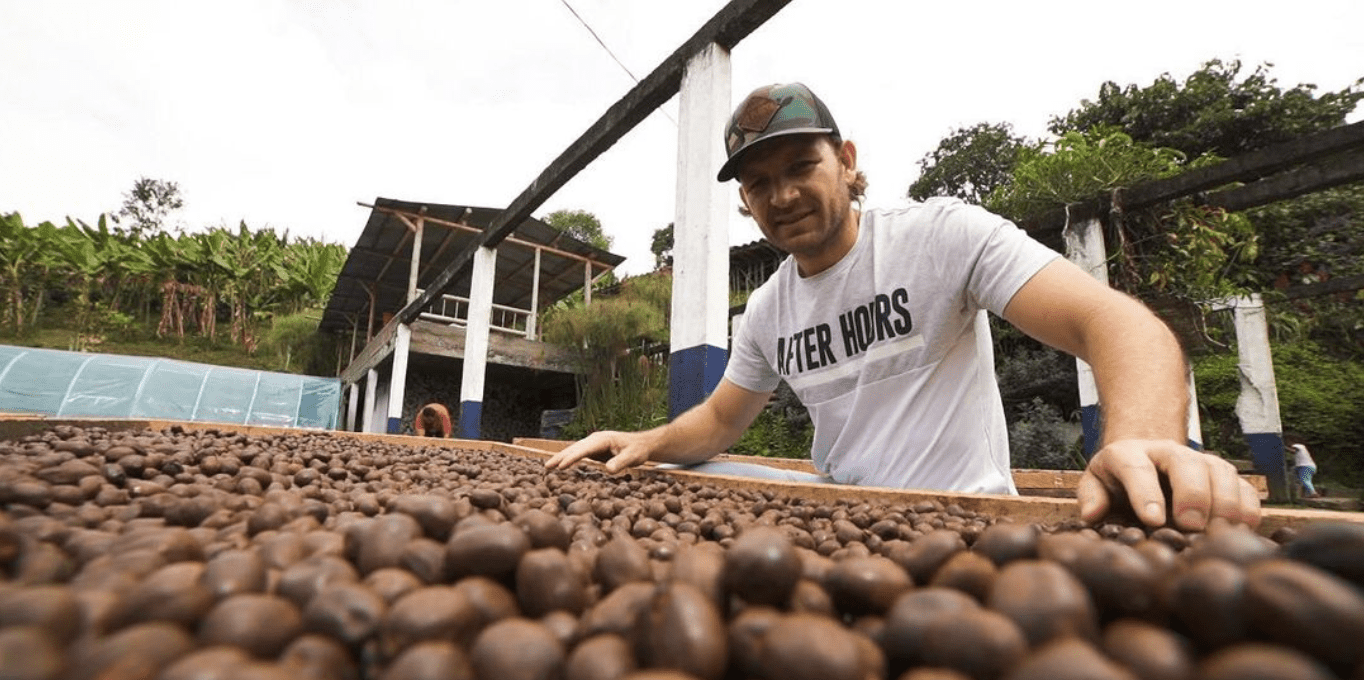

Sebastian Ramirez, of Finca El Placer in Colombia, checking on drying anaerobic fruit. Courtesy of Chromatic Coffee.
Judging from my correspondence with the 10 roasters whose coffees are reviewed here, I have plenty of support in valuing balance in anaerobics, balance usually meaning that the impact of the processing method enhances or intensifies, but does not completely dominate the coffee.
“I am most drawn to gently applied anaerobic methods that achieve surprising and elusive profiles.” Barth Anderson, Barrington Coffee Roasting Company (Galaxy Gesha Quindio Colombia, 95).
“Good anaerobics enhance and intensify the cup with clean sweet flavors … Bad or less good anaerobics seem overly processed or fake or imitation.” Mike Perry, Klatch Coffee (Colombia Monteblanco Rodrigo Sanchez Carbonic Maceration, 94).
“Definitely just because a coffee is anaerobic does not mean that it’s good. I personally love clean, fruity anaerobic-processed coffees, [but] I don’t like it when coffees take on more ferment flavors than coffee flavors.” Oliver Stormshak, Olympia Coffee (Ethiopia Gatta Anaerobic, 94).
The Origin Perspective
This innovative processing method was applied to coffee from some of the most prestigious of tree varieties — Geisha, Pink Bourbon — as well as more common, less distinctive-tasting varieties. Eight of the 10 coffees reviewed online were produced in southern and central Colombia; one was grown in Ethiopia and one in Hawaii. Although anaerobics are popping up everywhere, the method is probably currently most popular in Colombia, Ethiopia and Panama, where it appears to have originated. The preponderance of southern Colombia in this month’s reviews is partly related to season: The months following the beginning of the year are when the new crop from southern Colombia arrives in the Northern Hemisphere. However, it also appears that some Colombian producers are pursuing the anaerobic method with particular rigor and attention to detail. See the summaries of processing methods in the Notes paragraphs of the reviews for just a hint of the complexity of the anaerobic practices pursued by the producers of some of this month’s top-rated coffees.
The Consumer Angle
What do coffee consumers think about these unconventional, often flamboyant coffees?
All of the roasters whose coffees we reviewed this month agreed that anaerobics are popular with their consumers — in some cases, very popular. Gary Liao of Taiwan roaster GK Coffee (Colombia Finca El Paraiso Rose Tea, 94) points out that anaerobics make it easier for customers to identify flavor profiles because aromatic notes are more intense and idiosyncratic. “Most customers find it hard to get ‘floral’ or ‘citrus,’” he writes, “but with anaerobics they find flavors like ‘wine,’ ‘cinnamon’ or ‘pineapple.’ They tend to buy coffees in which they can notice the flavors.”
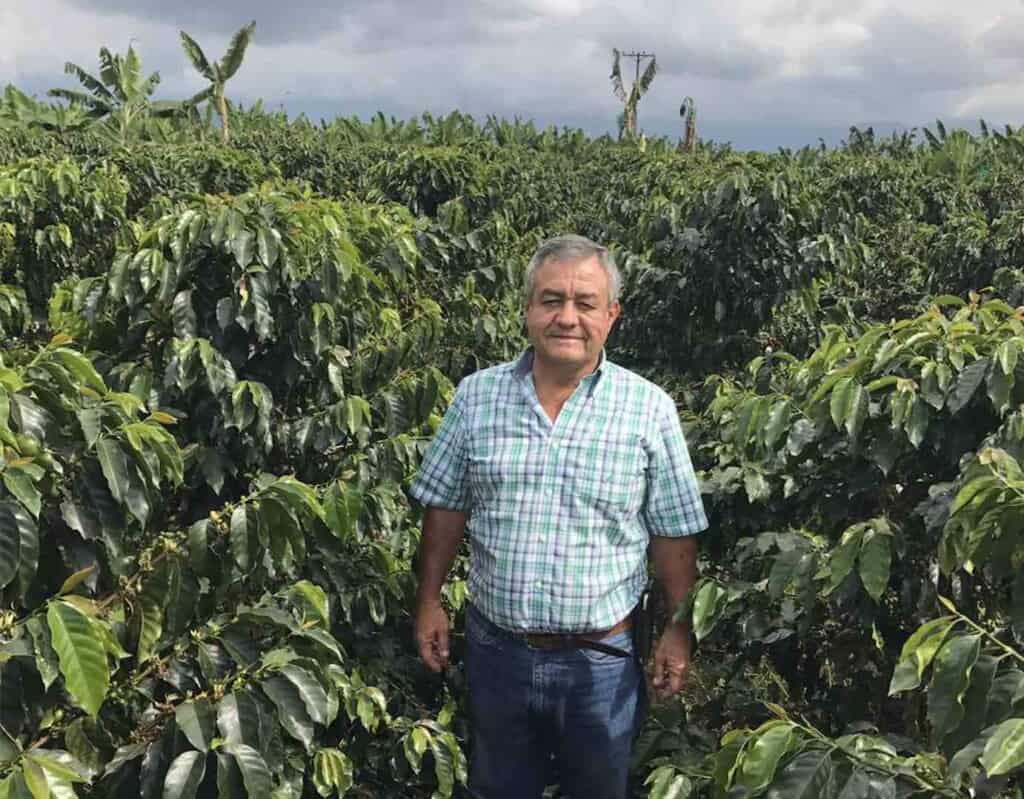

Jairo Arcila of Finca Santa Monica in Colombia. Courtesy of Royal Flamingo Coffee.
Roasters also praised anaerobics for their capacity to surprise customers and shock them into realizing that not all coffees taste the same. “Anaerobic coffees are definitely a conversation starter,” notes Bryan Brzozowski, roaster and co-founder of Royal Flamingo Coffee (Colombia Jairo Arcila Peach Maceration, 93). Adam Paronto, owner/founder of Reprise Coffee Roasters (Colombia Cauca Granja Paraiso Pink Bourbon, 94), adds: “We’ve found this process to be a major catalyst for coffee education. Most of our customer base is unfamiliar with coffee processing and a vast majority is unaware that … coffee is a fermented beverage. When they see a word like ‘anaerobic’ on our menu, it paves the way for a great conversation, opening the door to understanding other coffee processing methods.”
Nevertheless, some roasters hinted at consumer ambivalence. “Anaerobic coffees can be polarizing. Some customers love them, while some prefer more traditional coffees,” PERC Coffee Roasters‘ Director of Operations Taylor Kimball (Colombia Gesha Spirits Semi-Washed Anaerobic, 93) observes. Mike Perry and Heather Perry of Klatch Coffee add: “The great thing about coffees with this type of profile is everyone who tastes it can say, ‘Wow, that is different.’ And while some may love the difference, drinking a whole pot of it may be a little intense.”
The way anaerobic practices encourage and reward the creativity of the producer is also a virtue particularly valued by roasters. Hiver van Geenhoven, founder and director of coffee at Chromatic Coffee (Colombia Purple Fruit Anaerobic, 93) points out: “Customers may be interested in origin stories, but they also love dessert and signature beverages that play with ingredients. Now, [with anaerobics] instead of just crafting fun and creative signature beverages in our cafés, that stage can be shared with a producer who has a direct hand in the manipulation of flavor.”
Complex Events at the Mill
There are many variations on how anaerobic fermentation is performed, but all involve fermenting coffee in a sealed environment with no to very limited access to oxygen. Contact with oxygen encourages yeast fermentation and the production of alcohol. On the other hand, shutting the coffee inside sealed vessels (usually plastic or metal or tanks) encourages oxygen-free bacterial fermentation of the general kind that contributes to the production of sweet-tangy fermented foods and beverages like yogurt, kimchi, sour beers and kombucha. What happens during anaerobic fermentations is quite complex chemically, however, and a variety of yeasts and lactic-acid bacteria play a role, presumably accounting for the fusion of great sweetness and yogurt-like tang characteristic of these coffees.
In some cases, the act of limiting a coffee’s access to atmosphere and oxygen during fermentation is as simple as sealing the fermenting coffee inside bags for a relatively short time. But more often it involves complex, lengthy procedures involving closed tanks and control of pressure and temperature. If CO2 is injected into the tanks to accelerate the purging of air and oxygen, the process and coffee may be called “carbonic maceration,” a term brought over, along with many of the specific practices involved, from the wine world.
Coffee may be anaerobically fermented and dried as whole fruit (making it an “anaerobic natural”) or fermented in the fruit, then skinned and dried in the fruit flesh only (“anaerobic honey”) or fermented and dried after both skin and fruit flesh have been removed (“anaerobic washed”). Or, there may be two fermentations, one involving the whole fruit, and a second of the same beans with skins removed. Temperature and pressure inside the tanks are usually carefully monitored.
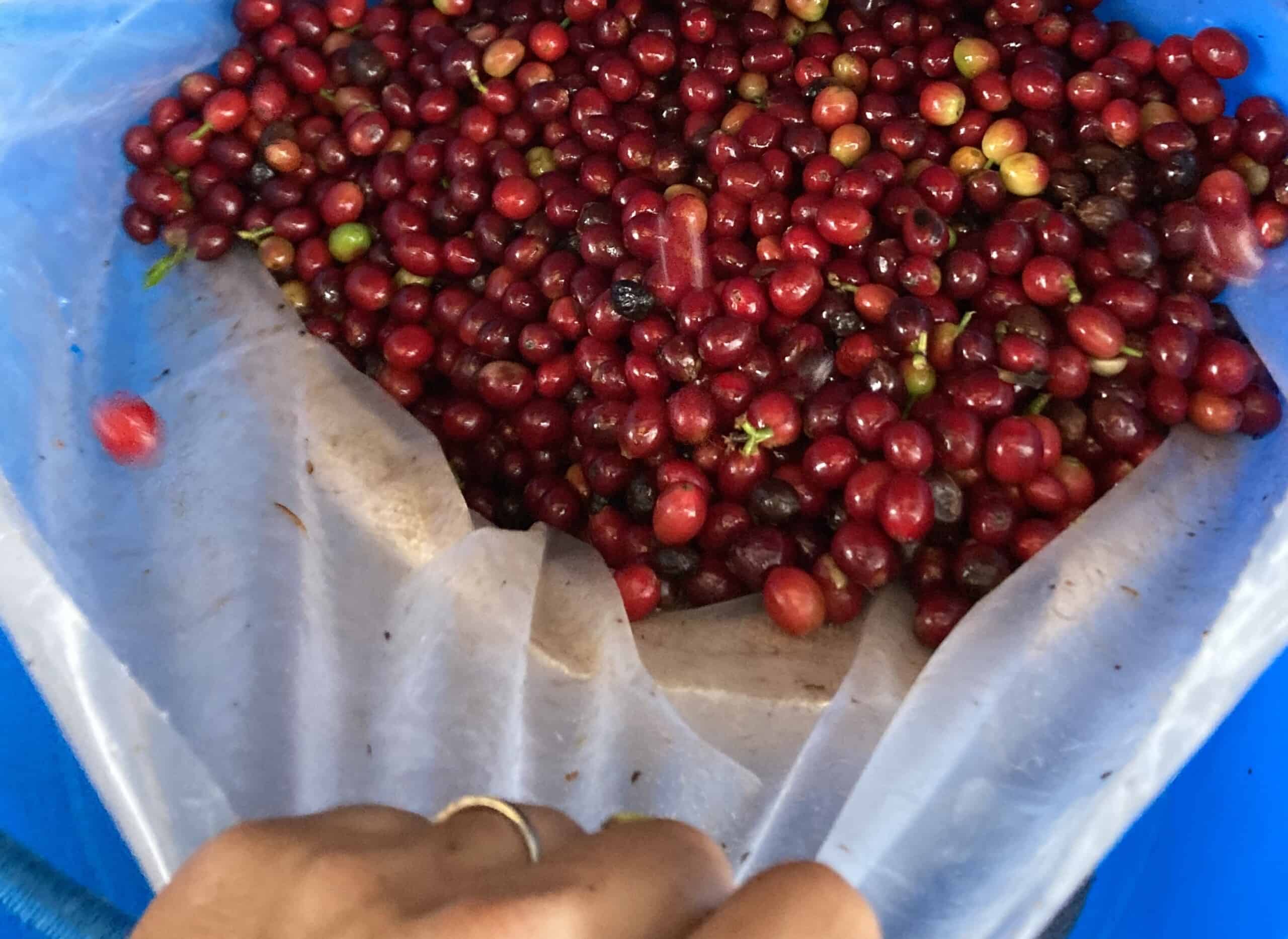

Miguel Meza of Paradise Roasters processes a JN Farms Bourbon himself, using a malolactic honey anaerobic fermentation method. Courtesy of Miguel Meza.
Pressure may be one key to the originality of the anaerobic cup profile. Pressure caused by buildup of CO2 inside the sealed fermentation tanks could help produce the sometimes astonishing display of fruit and floral notes in the final anaerobic cup by encouraging migration of fruit and floral compounds into the bean.
Many producers further complicate both the process and the final cup by adding material to the fermentation tanks, particularly cultured yeasts of the kind used in beer and wine production. With the report-topping 95-rated Barrington Galaxy Gesha Quindio Colombia, a batch of famously aromatic Galaxy hops was applied to the coffee at one point in the complex series of processing procedures. More controversially, natural fruit or spices may be shut into the tanks with the fermenting coffee. In the 93-rated Royal Flamingo Colombia Jairo Arcila Peach Maceration, natural peach pulp was added to the tank during fermentation, and pieces of peach were scattered among the drying beans.
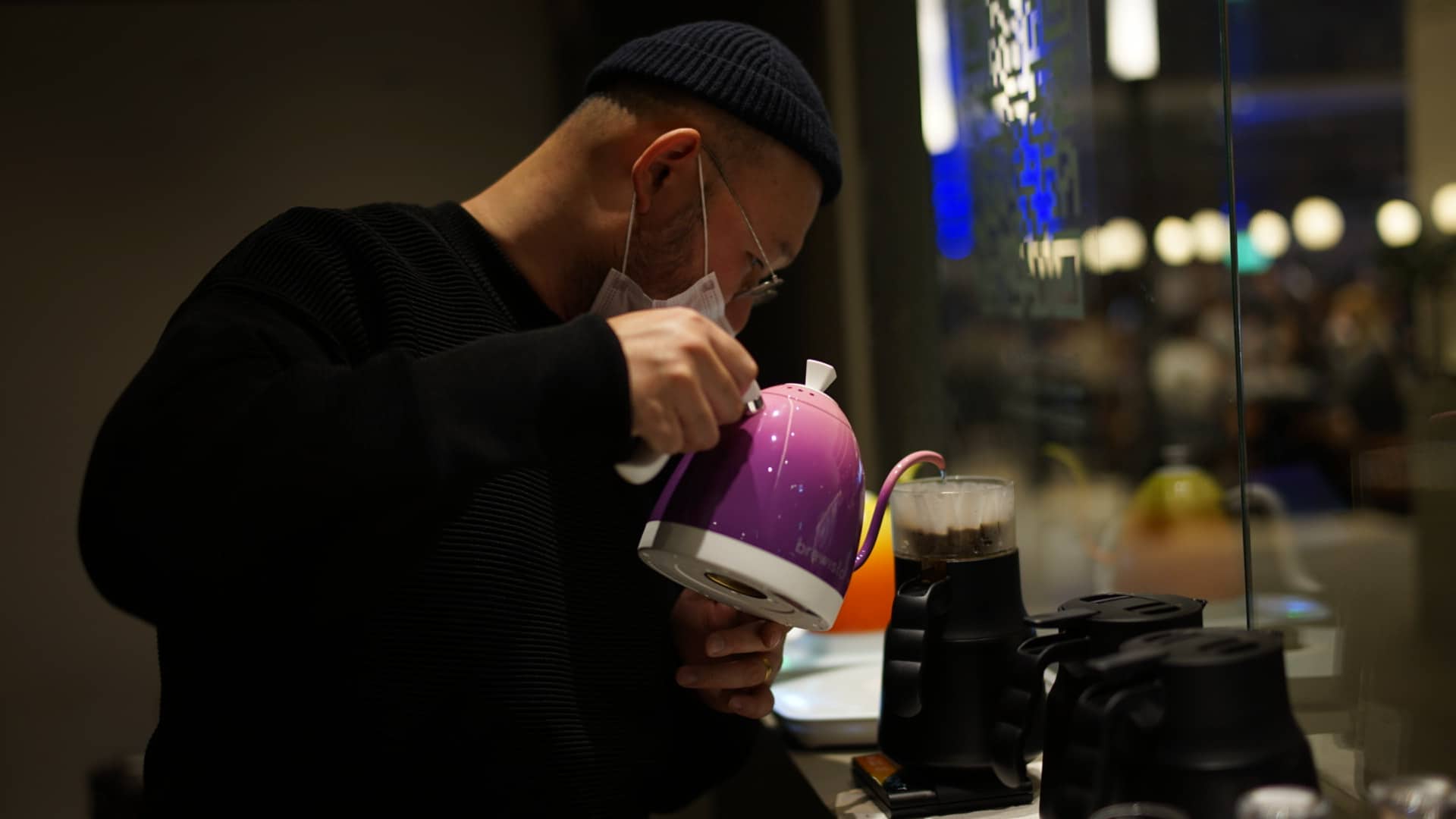

Youngjun Cho, of Prism Coffee Works, brews coffee at his shop in Seoul.
“Flavored Coffee?”
In our report coming in November of this year, we plan to look specifically into the anaerobics segment of specialty production that adds natural fruit or spices to the fermentation tank. Youngjun Cho of Prism Coffee Works in Korea (Colombia Osmanthus Bouquet Granja Paraiso 92 Colombia, 94), reports that anaerobic-fermented coffees generally are being criticized in Korean specialty coffee circles on the basis that they are “flavored coffee.” Cho argues that anaerobic coffees like his and most of the other coffees reviewed in this report are legitimate, non-flavored specialty coffees because they achieve their distinction through using only “environmental controls such as yeast, bacteria and temperature.” But he feels that those that add fruit or spices to the tank make up a different, more controversial category he calls “infused” coffee. Tune in to our November 2023 report “Fruit- and Spice-Fermented Coffees: The Cup and the Controversy,” for more on this contentious issue.
Anaerobics and Terroir
Anaerobic processing appears to be here to stay. And, in many respects, it is unprecedented in its potential impact on the specialty coffee world. Natural or whole-fruit processing may have seemed like a revolution when it was first applied to high-end coffees that until then had been processed only through traditional washed methods. But natural-processed coffees have a history as long as coffee itself, far longer than washed coffees. Honey processing is also a rather straightforward development, well within technologies and understandings already established in coffee practice.
But the technological and chemical mediations involved in anaerobics, even at the modest scale they are deployed now, seem a more radical departure from any of these earlier practices. Anaerobic methods bring to coffee technical interventions that originate in wine and in some cases beer, and invite the producer to create often radical profiles based on personal innovation rather than community expression of coffee tradition as conveyed in the term terroir.
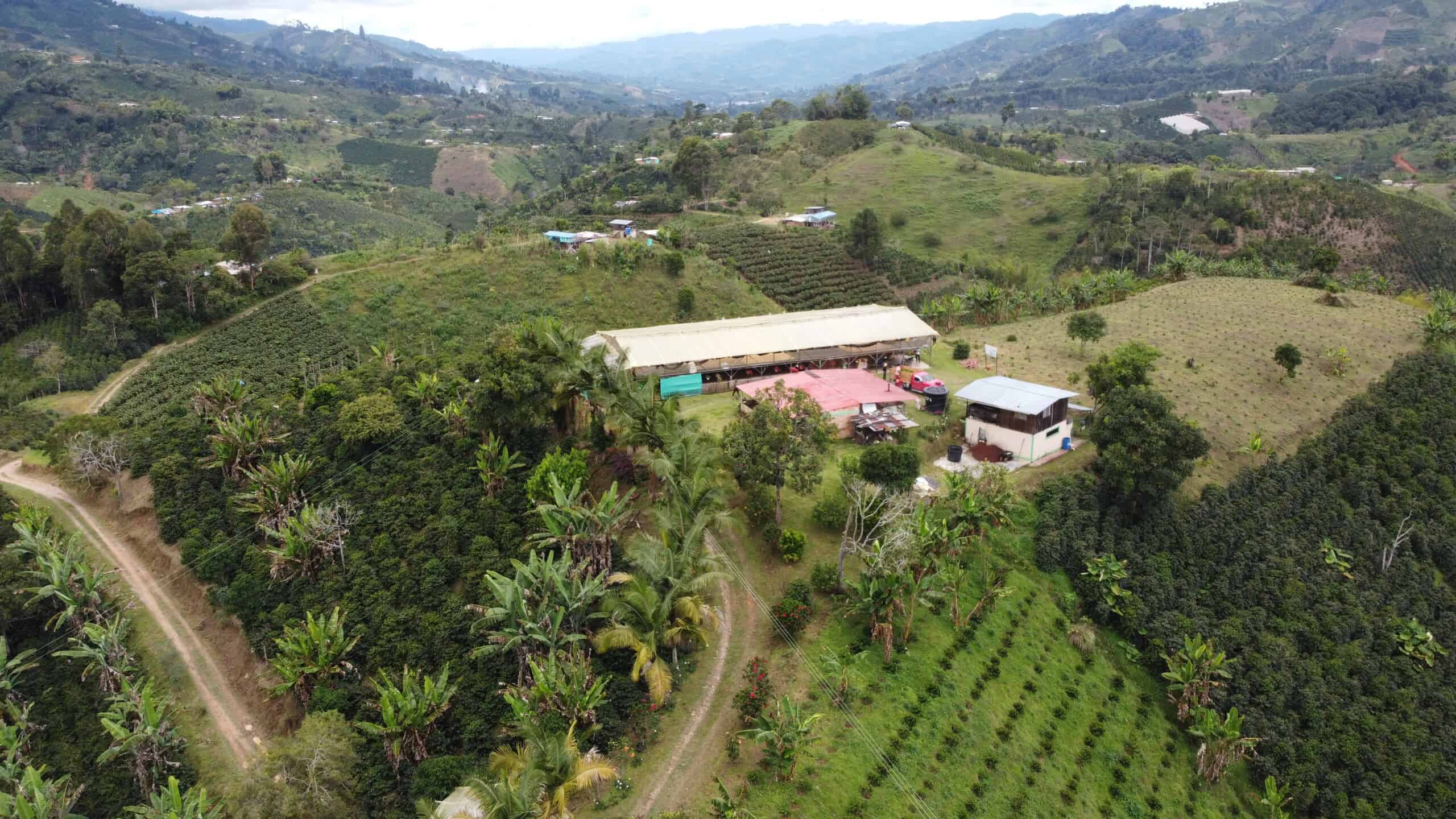

Aerial view of Finca Monteblanco in Colombia’s Huila Department. Courtesy of Klatch Coffee.
Terroir in wine and many other products is most accurately understood not simply as geography, but also as associated plant varieties and preparation methods as defined by tradition and often regulation. Great legacy types in coffee are products of a linked series of collaborative practices performed by the supply chain and determined by market expectations and tradition. Kenya coffee, a well-defined legacy type, is not only grown in a relatively limited geography, but it’s also produced from trees of certain tree varieties and processed using similar technologies and methods. Apply radical anaerobic processing to a coffee from the traditional growing regions of central Kenya, even one produced from traditional Kenya varieties like SL28 or SL34, and it will no longer express the Kenya “terroir.” It will simply be an anaerobic coffee from Kenya.
Miguel Meza of Paradise Roasters (Ka‘ū JN Farms Malolactic Honey, 95), a relentless innovator in respect to processing methods, suggests that anaerobic processing is best applied to coffees that are themselves not particularly distinctive. He says: “Generally we find mouthfeel and aroma to be intensified in anaerobic fermentations, and very beneficial to the quality of lower altitude coffees, as well as helpful in adding complexity to less distinctive varieties. But with anaerobic natural processing, the flavors of the process can be very dominant and the differentiation between varieties muted, so I don’t favor this method for expensive, limited production of rarer varieties that may have their distinctive qualities largely masked by the processing.”
Headed in the Opposite Direction from Wine?
Curiously, just at an historic moment when some in the wine world are reacting against “manipulated” wines by returning to simpler, less chemically or technologically mediated processes under the organic or low-intervention banners, we in coffee appear to be headed in the opposite direction with the latest anaerobics.
It may be that the coffee world will manage to assimilate and understand anaerobic methods as it apparently has with natural processing methods. I recall that even as few as five years ago we ran into many natural-processed coffees that were either over-fermented, giving them a slightly rotten edge, or, at the other extreme, dried too quickly and consequently too woody or nutty, bordering on lifeless.
At least at Coffee Review, we run into very few such failed naturals today. We more often sample naturals that are fruit-forward but clean, poised and complete. Perhaps innovators in aerobic processing will find their way to an analogous refinement that will offer the coffee world the “balanced” anaerobic profiles that many of this month’s correspondents say they are looking for. What will be the character of that balance?
I expect we’ll know it when we taste it.
Thanks to the roasters who greatly enriched this report by sharing their ideas and experience regarding anaerobic coffees: Beth Brzozowski, Bryan Brzozowski, Youngjun Cho, Gary and Kai Liao, Taylor Kimball, Miguel Meza, Adam Paronto, Heather Perry, Mike Perry, Oliver Stormshak, and Hiver van Geenhoven.
The post Fresh Fruit or “Juicy Fruit”? Tasting 90 Anaerobic-Processed Coffees appeared first on Coffee Review.

